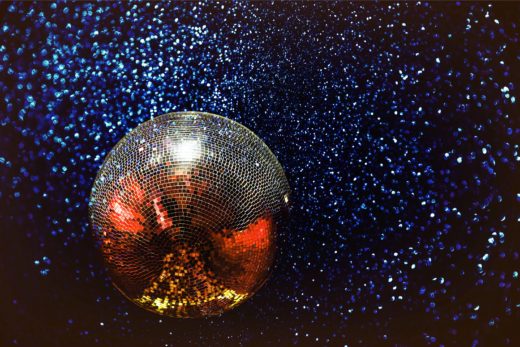
In that heady moment before the slate closes, some people have felt sometimes an undeniable sense of spiritual responsibility to a now century-long legacy of cinematographers. For some people, that feeling leads to a life of sober dedication to the craft, post-nominal letters and little gold statues. For others, it provokes nothing more than a desperate hope that a pocket-money budget will remain safely concealed behind an impenetrable wall of flashing lights.
Our irregular series on gleeful cinematographic dishonesty has examined a few approaches to this sort of thing. Like a wary parent approaching a scowling baby with an unappealing spoonful of broccoli puree, we’ve found ways to distract the audience from the indigestible reality of underfunded production design and cheap locations with tasty morsels of mist, backlight, blur and flare. All of these techniques rely on obscuring the less-fortunate parts of the frame in order to allow a willing viewer’s brain to fill in the gaps. The problem is that quite often there’s an unavoidable need to centre a subject in frame, focus sharply, and occasionally point a light at it.
Our keyword today is occasionally.
Flashing lights
The prototypical example of this is Cameron’s Aliens, in which a fight between a woman in a robot suit and a slavering monster risked coming off as comical had it been handled even fractionally less well. That’s hardly an underfunded production, but it was made with comparatively primitive technology. Many things make it work, not least a fantastic robot suit, a tanker truck loaded with methyl cellulose slime, and an Oscar-nominated performance. A large contributor, however, is that it’s all rendered much more acceptable by the sweeping beams of light which drag the eye away from the less-ideal aspects of the image.
Looked at dispassionately, the enormous revolving mirror rigs which motivate this light are barely believable, much as the film takes great care to establish them in previous scenes. Each is an assembly the size of a large trash can and looks to have an HMI in the kilowatt-plus range concealed beneath. They’re half the size of a coastal lighthouse’s lantern, but Cameron depicts them in use aboard a spacecraft that looks to be less than a couple of hundred feet across. A conventional rotating beacon would have been fine. It makes about as much sense as a walking forklift.
Ill-advised liaisons
Of course, the point here isn’t to prevent people falling out of the airlock, it’s to distract us from the fact that the creature is a combination of 80s practical effects at various scales, and that a walking forklift probably wouldn’t be that great at fisticuffs anyway. Either way, the result is something considerably better than many modern attempts at comparable scenes. This sort of thing is the stock in trade of music videos (and nightclubs looking to provoke ill-advised romantic liaisons). Similar things were done with the rotating beacons in the original Alien, the final fight scene in the first Resident Evil, and almost any other situation in which a passing train illuminates a scene.
If we broaden the scope slightly to include other kinds of flashing light, then the trick goes back at least as far as the birth of a famous monster at the dawn of sound, and comes to us via more or less every subsequent horror or sci-fi movie which can justify a lightning storm, malfunctioning electronic device or deranged necromancer. The 2002 film Equilibrium, which succeeds hugely in that it is much slicker and much glossier than it has any right to be for $20million, builds an entire fight scene from single frames illuminated solely by muzzle flash.
Moving lights
The idea of moving light, though, is uniquely powerful because it can leverage the reality of three-dimensional space simply by being panned through it, on a stand. Usually, if we want to see depth, we have to move the camera or the subject sideways, and that means large numbers of expensive people carrying large amounts of expensive equipment from truck to location. A static camera can watch light sweep through a location without either of them doing anything more than pan, and if we do want to get clever, it’s as easy to roll a light along on a dolly as it is a camera. People have regularly put lights on cranes to simulate the relative motion of the sun around a fighter jet, and lighting drones are increasingly common. Has anyone put a light on a gimbal yet? And then there’s time lapse, which can be shot by anyone with a third-hand DSLR and tends to feature sweeping shadows as the sun races across the sky.
This sort of trickery isn’t solely about obscuring regrettable things by not pointing lights at them. It’s also about the distraction of moving shadows and the option to actually animate chiaroscuro, something that could hardly be more appropriate to a moving-image artform that still takes major clues from the old masters. Or, at least, that’s what we’ll say if anyone asks why every scene in a police procedural reveals crucial clues in the sweep of a car’s headlights.
